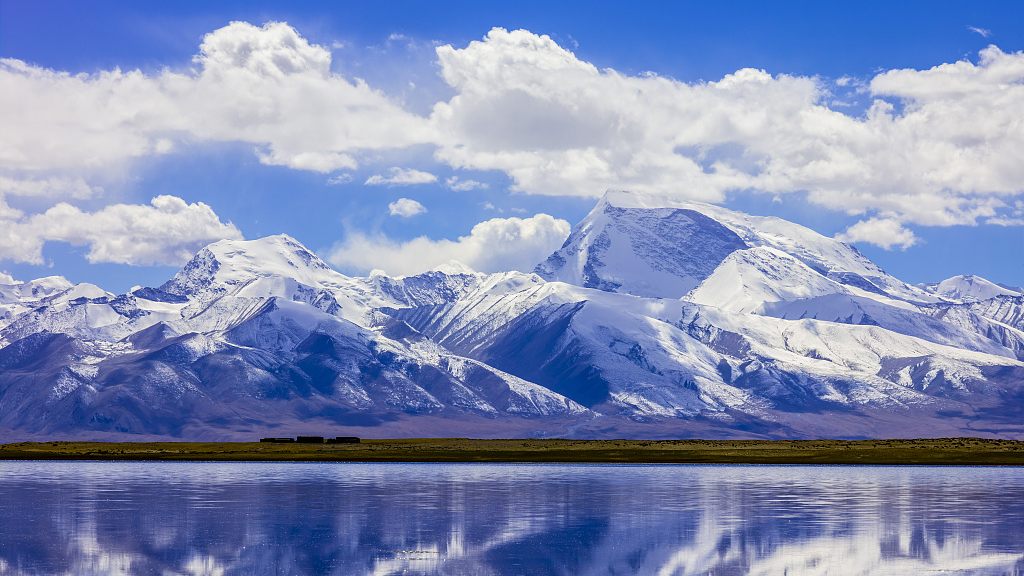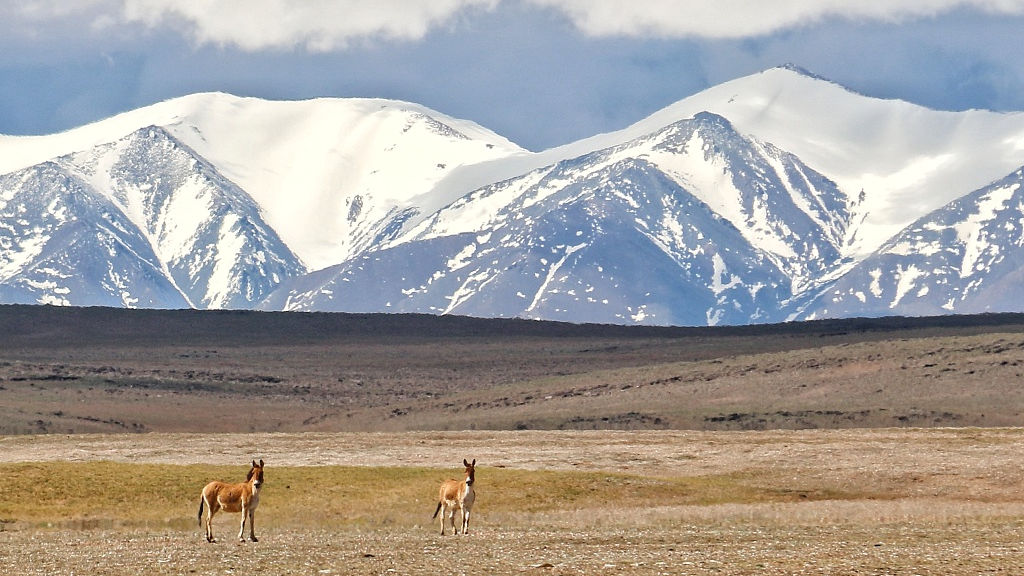A law on the Qinghai-Tibet Plateau ecological conservation adopted on Wednesday will come into effect on September 1.
The law was deliberated and passed at the second session of the Standing Committee of the 14th National People's Congress, China's top legislature, convening from April 24 to 26 in Beijing.
The law outlines the overall layout of the plateau ecology security, stipulates protection and restoration measures, risk prevention and control, and safeguards and supervision.
In addition to ecological protection and restoration measures, tackling the harm caused by climate change is also one of the key concerns of the law. It highlights the protection of snow-capped mountains, glaciers and permafrost, and it calls for effective measures to be taken to prevent human interference in relevant areas, such as prohibiting production and construction activities that may cause soil erosion in areas that already suffer severe soil erosion or have fragile ecology, sand mining and mining activities that do not meet conservation requirements in nature reserves for river sources, and the construction of new small hydropower stations on the plateau.

The Qinghai-Tibet Plateau. /CFP
The Qinghai-Tibet Plateau. /CFP
The Qinghai-Tibet Plateau is the highest plateau and largest plateau in the world. With a total area of 2.58 million square kilometers, the Qinghai-Tibet Plateau covers not only the Tibet Autonomous Region and Qinghai Province, but also parts of the Xinjiang Uygur Autonomous Region and Sichuan, Gansu and Yunnan provinces. Known as the "water tower" of Asia, it is the source of many of the continent's rivers, such as the Yangtze River, the Yellow River, the Mekong River and the Ganges.
The Qinghai-Tibetan Plateau and its surrounding mountains, also known as the Third Pole, promotes rich biodiversity from species to ecosystems, providing multiple important ecosystem services such as water, timber, pasture and recreational opportunities to more than 1.5 billion people.

The Sanjiangyuan National Park. /CFP
The Sanjiangyuan National Park. /CFP
China has attached great importance to ecological conservation in the Qinghai-Tibet Plateau in recent years.
As of 2017, the country has established 155 nature reserves there, covering 32 percent of the plateau. At the same time, China will promote the joint construction of several national parks on the plateau, and basically form a pattern of ecological protection on the plateau based on the national parks by 2025.
The Sanjiangyuan National Park is an outstanding example of China's efforts to protect the alpine ecosystem of the Qinghai-Tibet Plateau. It was set up as a pilot national park in 2016 and was officially established in 2021. According to the 2022 ecological assessment report by China's National Development and Reform Commission, the water conservation capacity has increased by more than 6 percent annually, and grassland coverage and grass yield have increased by more than 11 percent and 30 percent, respectively, compared with ten years ago. Also, the number of wild animals has increased significantly, with the Tibetan antelope recovering from less than 20,000 in the 1980s to over 70,000.
However, due to geographical location, alpine climate and other reasons, this highly valuable region, the Qinghai-Tibet Plateau, has a fragile ecological environment and weak ecological resistance to climate change and human activities. Once damaged, it is difficult to restore. It is still facing many challenges, such as the degradation of grassland, the increasing risk of glacier degradation, water and soil loss, biodiversity loss, and increasing hazards caused by climate change.
Considering the importance and challenges faced by its environment, the law has been enacted at the national level to provide a legal guarantee for ecological protection and sustainable development on the Qinghai-Tibet Plateau to better protect the environment on the plateau.
(If you want to contribute and have specific expertise, please contact us at nature@cgtn.com.)